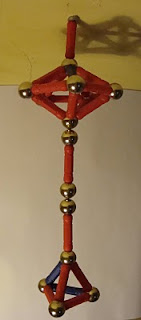I'm now hoping to revitalise this side of my work a little bit (although on a modest scale) by introducing a new tag for this blog, indicating all science news that is related to Latin America, i.e. both research performed there environmental issues that affect Latin America, like rainforest conservation. The tag is LA_ciencia (though blog entries will also be tagged by country).
To start things off, I I'm compiling here a list of some of the relevant pieces I have published over the last 6 years, sorted by country (will add items to the list as and when I remember them!):
Bolivia
Gross M:
Chemistry World 11.08. (online only)
Hot chillis evolved to kill fungi
[free access]
--2008--
Brazil
Gross M:
Current Biology 19, No 11 (09.06.), R427-28
Embryonic development
As the UK updates its pioneering Human Fertilisation and Embryology Act, legal boundaries for research in the life sciences are redrawn in other countries as well.
[restricted access]
--2009--
Colombia
Groß M:
Biologie in unserer Zeit 36, Nr 4, 17
Humanevolution: Kolumbien nach Kolumbus
An English version of this piece appears in The birds,the bees and the platypuses, page 154: Colombia after Columbus
--2006--
Costa Rica
Gross M:
Current Biology 19, No 21 (17.11.), R965
Coffee growers feel the heat
Coffee and tea farmers already appear to be suffering from the effects of climate change.
[environment]
[abstract and restricted access to PDF]
--2009--
Cuba
Groß M:
Nachrichten aus der Chemie 52, Nr 7/8, 812-814
Die zweite Revolution: Biotechnologie in Kuba
[@][@]Gross M:
Current Biology 14, No 11, R401-R402
Fighting isolationGross M:
Darwin No 2, 22-26
Biotecnologie -- l'altra rivolucione cubanaGross M:
Chemistry World 1, No 9, 19
Cuba synthesises blockbuster vaccineGroß M:
Spektrum der Wissenschaft Nr 10, 23
Kommentar: Der Fall Kuba. Der Inselstaat konnte sich mit Biotechnologie aus der Isolation befreien.Groß M:
Chemie in unserer Zeit 38, Nr 5, 306-307
Biotechnologie in Kuba: Mangomittel gegen Altern und AidsGross M:
Chemistry World 1, No 11, 38Biotechnology: the second Cuban revolutionGroß M:
Biologie in unserer Zeit 35, Nr 4, 227
Arzneimittelforschung: Impfstoffe aus KubaGross M:
Chemistry & Industry No. 15 (01.08.), 16-17
Fortress of success: Biotech companies in Cuba are making the best of what they haveGross M:
Chemistry World 3 No. 1, 7
Chemists queue up for Cuban collaborationGroß M:
Chemie
in unserer Zeit 40, Nr 1, 68-71
Kuba -- Improvisationstalent gefragtGross M:
Current Biology 16, No 3 (7.2.), R66-R67
Cuban efforts bolsteredGross M:
Oxford Today 18, No 3 (Trinity 2006),
Chemistry in CubaGross M:
Chemistry World No 10, 23 (online: 4.9.)
Antibodies in the greenhouse
[@@]
--2004--
--2005--
--2006--


















